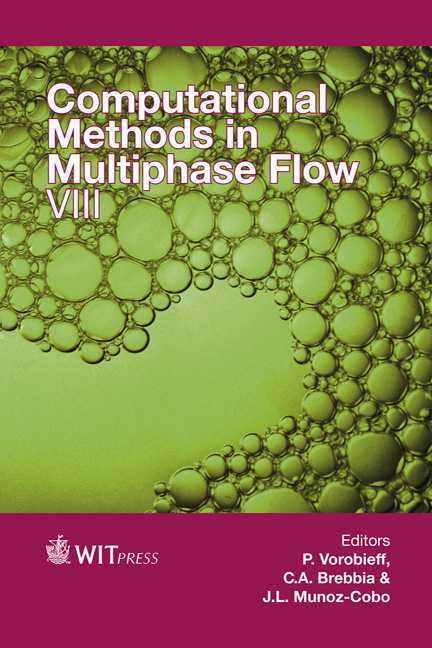Modelling Heat Transfer In Flashing CO2 Fluid Upon Rapid Decompression In Pipelines
Price
Free (open access)
Transaction
Volume
89
Pages
12
Page Range
45 - 56
Published
2015
Size
460 kb
Paper DOI
10.2495/MPF150041
Copyright
WIT Press
Author(s)
S. Brown, S. Martynov, H. Mahgerefteh
Abstract
Accurate prediction of transient releases of CO2 fluid from high-pressure transportation pipelines is important for the hazard assessment of such pipelines and the planning of their routine venting procedures. The accurate prediction of the fluid phase content, mass flow rate, pressure and temperature is key to the emergency response strategy or the vent pipe design, and is fundamental to the pipeline design and material selection for fracture control. Commonly to calculate releases of flashing fluids, such as hydrocarbons, from high-pressure vessels and pipelines, the simplifying assumption of a homogeneous equilibrium mixture (HEM) is applied. While this approach has proven to be robust for hydrocarbon mixtures, its validity is limited to inertia-dominant flows where the vapour and liquid-phases are well mixed. In the case of CO2 fluid, the widely different densities of the vapour and liquid phases can lead to phase stratification in the pipeline during its decompression. The fluid phase stratification creates phase slip and thermal non-equilibrium between the phases, significantly impacting the outflow rate. In this work, a two-fluid compressible flow model is used to investigate the impact of thermal non-equilibrium on transient CO2 pipeline decompression; the model predictions are compared with the results of simulations using HEM model as well as the experimental data on CO2 releases from a largescale pipeline.
Keywords
multi-phase flow, non-adiabatic flow, mathematical modelling, largescale release experiment





